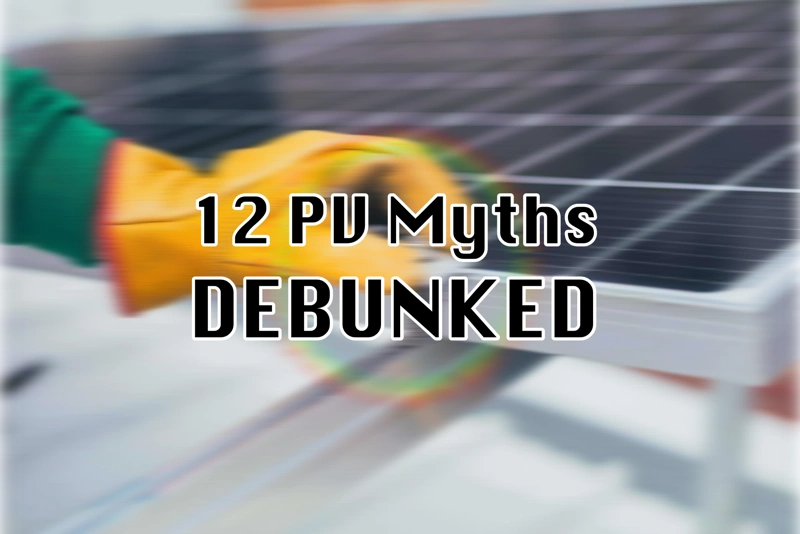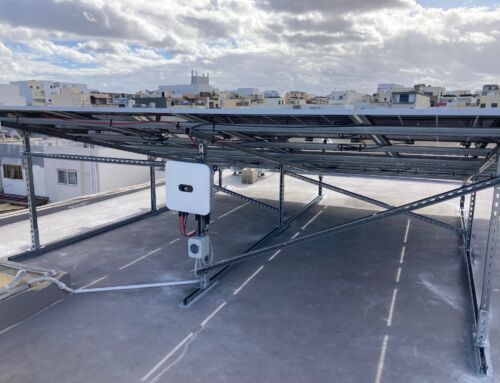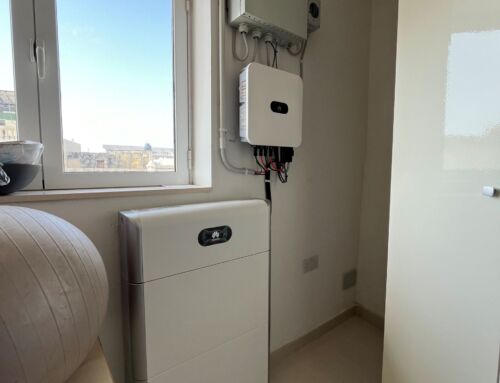PV myth #1 – Solar panels are an expensive and risky investment
In reality, the opposite is true. Thanks to recent advances in PV technology, reduction in solar panels’ prices and substantial government incentives, investment in a solar energy system today is one of the MOST lucrative and secure investment options available.
For example, with Virtue Solaris special offers, one can invest as little as €1,700 in a high quality PV system, which will provide up to 35% annual return on investment. This investment is completely SECURE due to feed-in tariff incentives provided by the government, and due to long term guarantees on power performance of PV panels and other PV system components.
More on return on investment in PV at Virtue Solaris.
And, just in case you’re aware of any OTHER way of investing your money at a comparable rate of annual return, let us know in comments below!
PV myth #2 – Solar panels have a very long payback period
Most PV systems offered by Virtue Solaris have a payback period of around 3 years. This means that the investment would fully pay back for itself in only 36 months, and after that solar panels will continue to generate revenue over many years to come!
Indeed PV panels offered by Virtue Solaris have a certified and guaranteed performance benchmark over 25-30 year period.
PV myth #3 – Solar panels are not for me as I cannot afford initial investment
In reality, some PV systems offered by Virtue Solaris require NO upfront investment at all. For example, it may be possible to acquire a quality PV system WITHOUT any deposit, and with monthly repayments starting from as low as €49.
What’s more, the value of monthly repayments would, in most cases, be equal or less than the value of savings in electricity bills. Thus under some conditions, it is possible to install a high quality PV system virtually for free!
Check out the most affordable solar panels for home offers!
PV myth #4 – Solar panels are exposed to the elements and their performance degrades quickly
In actual fact, some of the earliest commercial PV systems installed back in 1970s still generate electricity to this day.
PV panels offered by Virtue Solaris are certified to provide not less than 80.6% of their initial rated power output even after a staggering 30 year period!
More on Virtue Solaris power performance guarantees.
PV myth #5 – Solar panels are fragile and can be easily damaged by hail, or even blown out by strong winds
PV panels offered by Virtue Solaris are certified to withstand extreme windloads of up to 2400Pa, which is approximately equivalent to a force of 240 kg per square meter!
Such solar panels can resist direct impact of huge hail balls of up to 5cm in diameter, thrown at speeds of up to 100 km/h.
Of course, resistance against wind also depends on the quality of materials and workmanship of the installation.
Virtue Solaris PV systems utilize only the highest quality hot dip galvanized steel or anodized aluminium mounting brackets, which are designed to withstand windspeeds of up to 52 m/s. This is more than a hurricane-force wind speeds that have never been recorded in Malta!
PV myth #6 – It is not profitable to invest in solar panels because after six years from installation the government would only pay 7 cents per unit exported to the grid
Renewable Energy (renergy) from Photovoltaic Panels (PVs): 2018
In reality, current government incentives provide multiple feed-in tariff options.
For example, one can opt to benefit from a government grant of up to €2,300 and a feed-in tariff of €0.165 per unit allocated for 6 years.
Or one can opt for PV energy to be used to offset own consumption, which, depending on one’s billing rate, can result in savings of anywhere between €0.125 and €0.60 per unit, for as long as PV panels remain active!
One can also opt for a feed-in tariff of €0.155 / unit guaranteed for 20 years.
PV myth #7 – People who invested in PV panels six years ago and whose energy export contract has expired are now in a quandary as they have no further option than continue to sell their PV energy at a meager 7c per unit
In actual fact, people who installed PV panels with support of a government grant over six years ago have multiple choices.
They can either opt to change their contract to self consumption, thus offsetting their energy bills, rather than earning a marginal rate on total energy export.
They can also invest in battery storage to help maximise the use of own PV energy for self consumption during the night. Or they can opt to decommission their old PV system and invest in a modern, higher powered and more efficient PV, and benefit from a new export tariff of €0.155 / unit guaranteed for 20 years.
Virtue Solaris has a range of special offers catering specifically for such situations – contact us now on 9988 0528, send us a message or drop us an email on [email protected] for free consultation.
PV myth #8 – I do not really need PV panels. Why should I bother installing them?
On average, a typical Maltese household spends around €1,200 in energy bills each year. That’s a staggering €24,000 over a 20 year period!
Think of what you can do with an extra €24,000 in your pocket. Perhaps an extra holiday break each year? A gym membership for all the family all year around? Replace that old car with a new, fuel-efficient one, or perhaps an electric vehicle?
Possibilities are endless. PV panels can make them a reality.
PV myth #9 – I don’t really have much space for PV panels
If you own a property with a roof, no matter how small, PV panels are simply a must.
A typical PV panel takes up only about 1.5 square metres of space, and a decent domestic PV system can take up as little as 18 square meters of space.
That’s typically less than the size of an average washroom, a yard, or roof terrace.
Virtue Solaris offers its customers tail made solutions for EVERY roof. In some cases, PV panels can be elevated on a custom-made structure, which would allow continuous use of the roof for any activity, be it roof garden, a BBQ space or simply the place to hang one’s laundry!
PV myth #10 – My roof is partially shaded by surrounding properties. PV panels would not work.
Virtue Solaris offers many solutions for partially shaded spaces. These solutions range from strategic placing of PV panels in such a way so as to maximize exposure to sunlight, to splitting PV circuits into multiple MPPT strings to ensure that one shaded part of the array does not affect the performance of another part, to fitting each solar panel with optimizers that effectively mitigate partial shading effects.
We also have a special offer package specifically catering for such situations.
We do professional shading analysis utilizing specialized software that allows us to estimate precisely the performance of any PV system, even one that is partially shaded.
PV myth #11 – The more power a solar panel has – the better!
This is one of the most common misconceptions about PV, and one that has often misguided many consumers into unnecessarily spending more money on higher powered panels they do not really need.
Indeed a PV system consisting of higher powered panels does NOT necessarily provide an overall better value compared with a system consisting of less powerful panels. More often than not, the opposite is true!
Firstly, it is worth noting that under current regulations, the maximum permissible power output of a PV system allowed on a single phase is limited to 3.68 kW AC. This means that no matter how many solar panels one would wish to install on single phase, the combined OUTPUT power of the inverter SHALL NOT exceed 3.68 kW.
Moreover, another regulation states that the maximum size of a PV system connected to an inverter should not be more than 20% larger than inverter’s rated AC output. Therefore if a single phase inverter’s power is limited to 3.68 kW (AC), the maximum DC power of solar panels cannot exceed 4.416 kWp (DC).
For the sake of an example, this maximum power can be approached by having either 14 solar panels rated at 300Wp (DC) each (4.2 kWp), or 13 panels 320Wp each (4.16 kWp) or 11 panels 385Wp each.
Although higher-powered solar panels tend to take up less space, they also tend to be more expensive than solar panels with lower power rating.
If the space available for PV system is sufficient, it is actually BETTER to use solar panels with a slightly lower power rating, but which come at a cheaper price and hence better value. At the end, whether one uses 280Wp panels or 385Wp panels, the power output of the equivalent PV system would still be the same!
Contact us now on 9988 0528, send us a message or drop us an email on [email protected] for free consultation on what type of PV system may work out BEST and give greater VALUE to YOU!!
Activity tags




